How to Recognize a Quality Pizza? Tips to Discover All The Secrets Behind Pizza
Let's see all the tips to discover the secrets of pizza: from the dough to the topping through the cooking and all the defects that a good pizza should never have.
;Resize,width=742;)
The basic ingredients are simple and few: water, flour, a pinch of salt and yeast. It seems easy to talk about pizza and we are all convinced that we have eaten "the best" but in reality making a good pizza is a more complex exercise than you might imagine. It is one of the symbols of Italian cuisine and is loved all over the world but how many times have you felt bloated or had difficulty digesting? These are problems due to poor management of the dough or low-quality ingredients.
Let's start right here: a truly good pizza is a pizza made with genuine ingredients, it is a pizza that has had the right amount of time to mature and rise, that is cooked to perfection. It may seem like a whim but the appearance of the product is fundamental: pizza is one of the few foods that can actually be judged by its appearance. A burnt pizza, out of shape, with bubbles bursting on the surface, with too little or too much topping, is a bad pizza. A pizza that looks good can taste bad, let's be clear, but a pizza that has those problems is very unlikely to be good. Let's see together how to recognize a good pizza and all the steps to take to be a true "taster".
The Perfect Pizza's Identikit
First of all, we must note that in recent years there has been an increase in the average quality of pizza. All this movement is supported above all by customers: people's greater awareness of this product and of ingredients in general has forced pizza makers throughout the world to catch up. The pandemic lockdown has also contributed to this: we have all started playing with dough and if we "mere mortals" have improved within our homes, the leap forward of professionals is even more evident. However, people often get carried away by social media, by personalities and by sympathies: there is nothing wrong because everyone is free to spend their money as they wish, but here we try to understand how to recognize a good pizza in the most objective way possible. We would like to specify that the references are to a traditional Neapolitan pizza and its evolutions, such as the canotto pizza or the more contemporary one. Obviously, if we eat a Roman scrocchiarella, a fried pizza or a pan pizza, the parameters are different.
1. If They Call It "Round" There Must Be a Reason
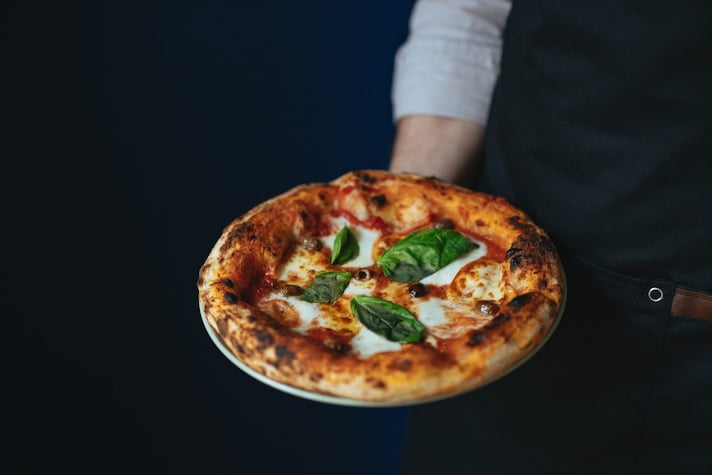
In pizza, the habit makes the man. Pizza must be inviting, so it must have products that have a healthy and natural appearance. It must be perfectly round, with the right amount of topping. Not too much topping, not too little. Pizzas with elongated or irregular shapes are the result of incorrect rolling out in most cases. It is also possible that it is due to the dough that sticks to the peel, to a gluten mesh that is too loose that does not allow the dough to be tenacious. This also brings another problem: the topping moves from one side of the circle to the other. The topping of the right amount must be uniform over the entire circle.
2. No Bubbles: The Look of a Good Pizza

Still on the subject of appearance: there must be no bubbles that burst during cooking. This could be a symptom of poor oven management, with too high a temperature, or of the dough rising too much, or of incorrect rolling out.
Additional attention on Neapolitan pizzas: the diameter must not exceed 35 centimeters, the edge must be raised and the central part must have a maximum thickness of 4 millimeters.
3. The Pizza Must Sing
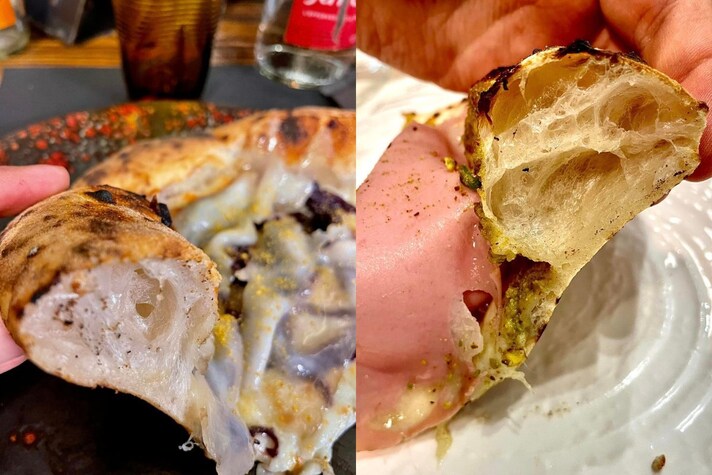
Like a good pianist, try tapping the crust: you have to hear the dough singing. Be careful though, because the sound changes depending on the type of pizza: a traditional Neapolitan pizza is squashed to the point of being unbelievable, so the "crunch" you hear must be barely noticeable. On the contrary, you have to hear Tullio De Piscopo's solo when you "squeeze" a pizza with a more pronounced crust because the alveoli break, the air comes out, the crust squashes.
4. The Black Halo on The Bottom And The Dirty Hands
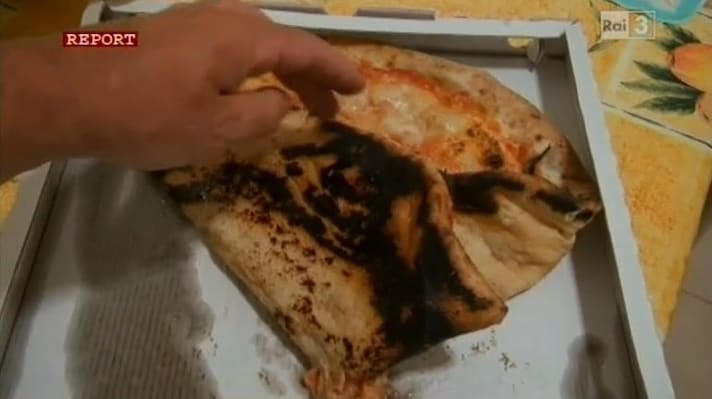
We're almost there, we've touched it. If your hands stay clean, it's a great sign, but if they get "dusty" it's a problem with the flour or the equipment: too much flour used to roll out the pizza on the counter and/or a "full" peel, that is, without the holes that let the excess flour fall. This causes a bitter, unpleasant smell, because the "unkneaded" flour burns during cooking.
Speaking of burns, watch out for the bottom of the pizza: if there is a black "curve" of burnt it is not a good sign. Remove that piece if it is too long because the baker moved the pizza during cooking causing a thermal shock to the dough. Even the famous "spots" on the edge are a false myth: stains are inevitable because it is a dough that cooks at a very high temperature but if there are too many it is likely that the pizza chef cooked the pizza without taking into account the temperature of the dough itself, too cold in this case. Burnt pizza is bad for your health. The color of a good pizza should tend towards light gold.
Does Pizza Smell Like Bread?
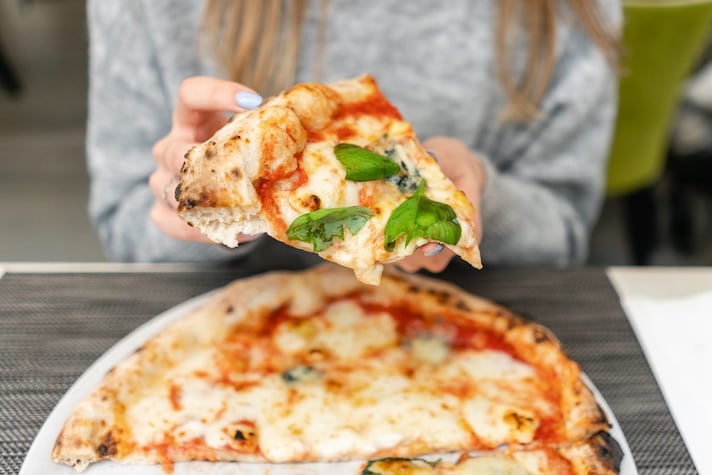
You may think that now is the time to eat but no, enjoy the moment. Smell the goodness that has appeared on the table. First of all you have to smell all the aromas of the chosen ingredients. In the case of margherita and marinara the first aroma that must arrive is the acidic hint of the tomato, that of the milk given by the mozzarella and the fruity and spicy smell of the oil. In the case of marinara there are then oregano and garlic that must immediately hit our nose. If you choose any other pizza you have to smell the ingredients listed on the menu.
The dough should have the scent of fresh bread, especially the crust, you should also smell the wheat and yeast but only slightly. This is only for the dough because then in reality the pizza should release as much as possible the scent of the ingredients used for the recipe.
What About The Alveoli?
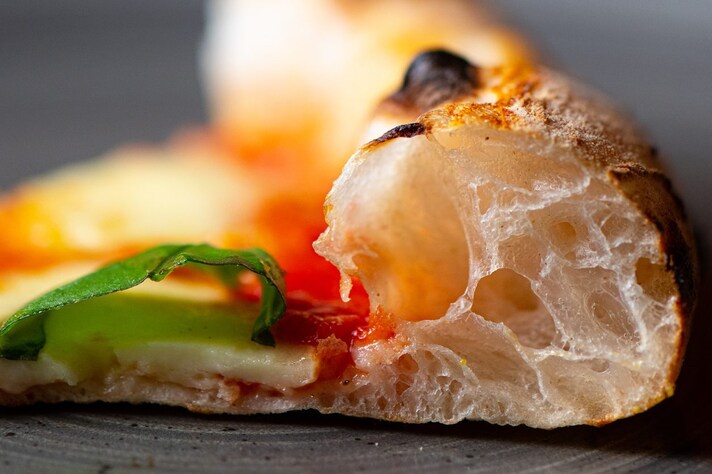
Before biting into the slice (finally) take a look at the cut edge. With the exception of the round Neapolitan one that has almost no alveoli because it is squashed by the pizza chef, the bubbles in the dough are an excellent litmus test to understand if the correct dough timing has been respected. The alveoli must be round, just like bubbles and must "stick" to the walls with threads. More than a cave it must remind us of a spider web. The pizza chef must be our friendly neighborhood Spiderman. Even in this case we cannot talk about "too many" or "too few": there must be the right amount. A too alveolated edge has had problems during the leavening process.
The Consistency of a Good Pizza

From the first bite we can understand if a pizza is well made or not. The dough must be melting and light in the mouth. Chewing must not be excessive: the pizza must almost "melt" under the teeth. Depending on the type of pizza then the bite changes: a classic Neapolitan must only be soft, like when we bite into a Sicilian brioche, it must be easily foldable on itself like a pizza a portafoglio and have a crust of a couple of centimeters, puffy, golden, with very few burns; a more modern one must be crumbly and crunchy but in neither case should we see the biscuit effect. This would be a defect.
Cooking Pizza is Essential
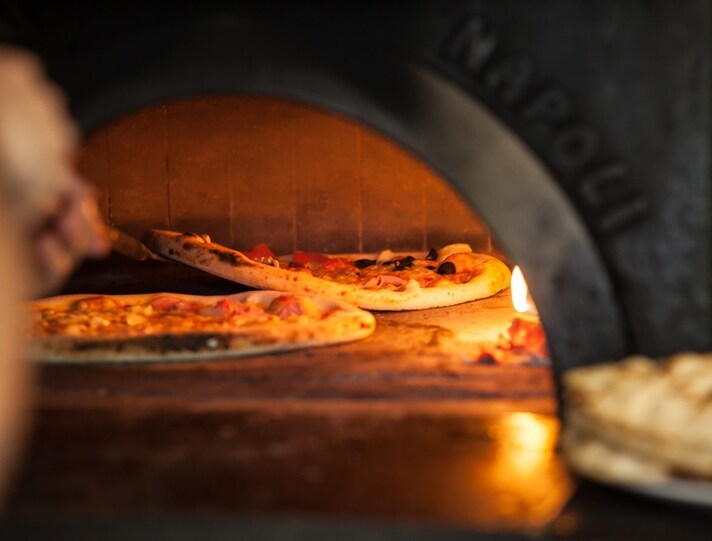
We said that the average quality has generally risen: we note that we still see too often errors in the cooking phase. In addition to those listed and visible at first glance, there are several errors that we can only find by tasting the pizza, especially the edge. This must be exposed at the right distance from the flame and must have a dry interior, not moist. A too crunchy or too wet edge is a symptom of a pizza that has gone overcooked or is still raw.
The Importance of The Dough
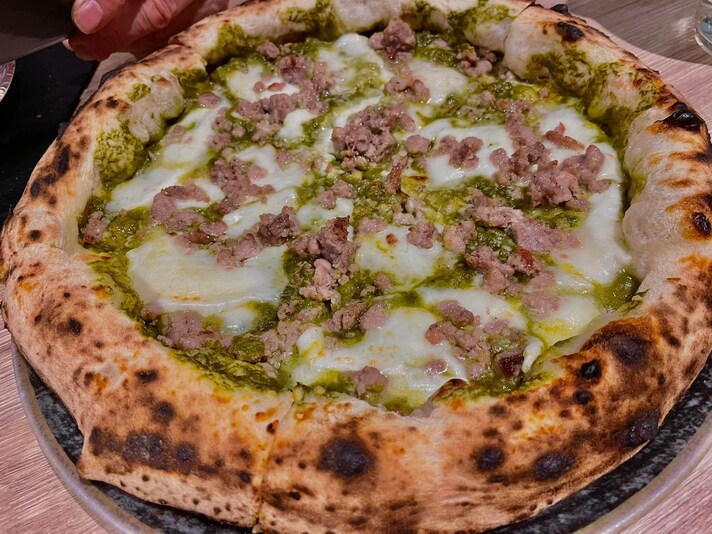
From the edge we can also better evaluate the dough because it is not "contaminated" by the topping. The pizzeria must make conscious use of flours and must arrive at the correct timing of maturation and leavening. A dough made according to the rules of the art is an additional ingredient, in the case of contemporary pizzas, or the completion of traditional ones. The dough and flavor of a classic Neapolitan pizza is not the sum of tomato plus oil, more dough and more mozzarella but it is the smell or flavor that comes from the fusion of these elements, with oregano and garlic instead of dairy if you ordered the marinara.
A good dough is soft but not rubbery and above all it is digestible. An indicator of a good pizza can also be obtained by pressing the edge with a finger and releasing it: it is not a good sign if it does not rise. Let's keep in mind, however, that it is not the sourdough starter, the biga, the poolish or the brewer's yeast that make a good pizza and a good dough so let's not be fooled by what pizzerias write.
What Do We Put on Pizza?
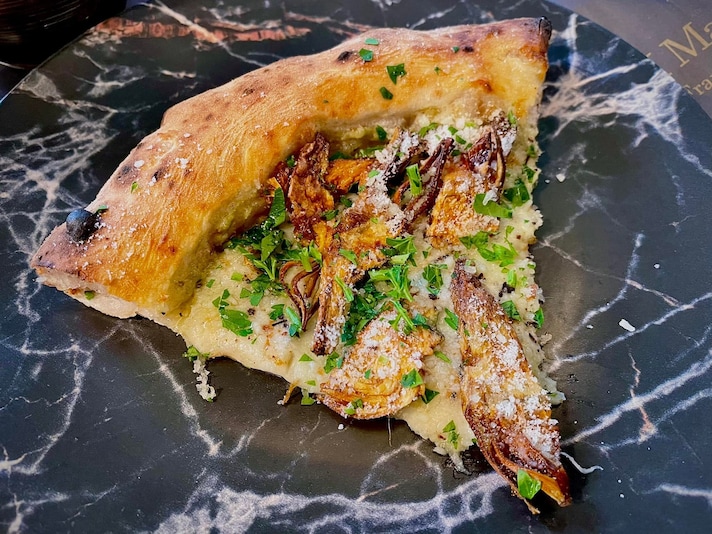
Today a fundamental aspect is that of the recipe on the round ones. Let's start with the two most classic flavors: margherita and marinara. In the first case, the mozzarella must melt evenly. If it seems plastic, if it resembles rubber or if on the contrary it seems like a melted slice of cheese, you can be sure that you are looking at a very low quality dairy product. On the other hand, the flavor will confirm this hypothesis. However, in both margherita and marinara there is an even more decisive element: the tomato. A high quality tomato has a balanced acidity: if you feel the sauce is too sweet, it is likely that there is some trick by the company or the pizzeria to improve the product. Even a tomato that is too salty could be a problem and you can be sure that you will spend the night drinking.
In an absolute sense, the rule of any good dish applies: the ingredients must be in balance with each other, without one rising above the others. There must be no jumbles of flavors and consistencies, everything must be put on the pizza for a reason. Obviously everything on the plate must be edible. The raw material used on a good pizza must be of high quality: it seems obvious but it is no coincidence that only the best pizzerias in Italy use local products, original recipes and do research. Everyone is good at saying "I use good products" but it is a phrase much easier to state than to put into practice.
;Resize,width=767;)



